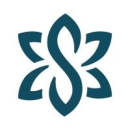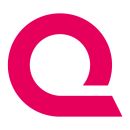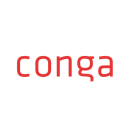
As the world’s largest industries shift further into the tech space, the demand for software engineers continues to grow.
Whether they’re building out a new platform or running network control systems, smart, savvy coders are taking on a wide range of tasks. And while employees across the Centennial State are tackling challenging projects, it’s not all hard work. Businesses like CirrusMD and Quantum Metric focus on team bonding, offering fun diversions such as book clubs, annual company gatherings and even ski weekends.
Check out the unique engineering cultures at these six growing organizations in Colorado.
What they do: Zayo operates high-performance fiber networks and infrastructure across North America and Europe.
What are some of your favorite tech tools your team is using?
At Zayo, we combine internally-developed tools with tools from our vendors. We primarily use MetaSolv, which records and manages equipment and services, in addition to Salesforce, Microsoft Visio, which allows us to layout a visual representation of the engineering network design, and a GIS tool like Cacti that maps and monitors the route miles and network coverage, including capacity availability. Our favorite tool is our own product, Tranzact.
What’s the most interesting or challenging project you’re working on right now, and what do you enjoy most about it?
One high-profile project that comes to mind is a countrywide, pre-signature project. It was critical to analyze our diverse network backbone, identify the bottlenecks and pre-plan a delivery layout that engages the right teams and leaders beforehand. This was paramount to augment our internal capacity in time to not only provide a commit date but also accelerate service delivery. Pioneering a complex project like this can be tedious and requires being proactive and purposeful. However, building a semi-automated process that streamlines the engineering, provisioning and delivery process to reduce turnaround time while influencing higher profit margin was every bit worth the effort.
We live in an era of ever-increasing demand for bandwidth. Designing, developing and maintaining our core network to meet this demand is motivational for me.
Our team culture encourages open communication and innovation, which forms the core of every discussion.’’
What’s something unique about your team from other engineering orgs you’ve been part of?
My team has a shared ambition to leverage expertise from every resource to refine and transform our network. Our team culture encourages open communication and innovation, which forms the core of every discussion. We focus on continuous learning to keep up with technology and constantly try to better our processes. We possess a company-wide understanding of the impact our deliverables have on the global communications infrastructure.
Our organizational structure provides us with numerous opportunities to collaborate across teams every day to engineer, provision and deliver services to our customers. Encouraging creativity while harboring such transparency to optimize work at all levels imparts a sense of belonging within this community. Zayo supports an inclusive culture across the company in order for our fiber to fuel global innovation. We believe our culture, in addition to our fiber, is our biggest asset.
What they do: SonderMind is a digital health company that connects patients with licensed therapists for online and in-person sessions.
What are some of your favorite tech tools your team is using?
For the most part, our application consists of an Angular front end and a Rails back end. As a front-end developer, I work on the Angular side, which means I work with modular components and data streams along with all the goodies that RXJS has to offer. We also work with Iris design system, Angular material and Sass to streamline our styling standards.
What’s the most interesting or challenging project you’re working on right now, and what do you enjoy most about it?
I work in the client intake portion of the app and right now we’re working on an initiative to rearrange and refresh the client account setup experience to increase retention and, of course, improve user experience. As much fun as it is to create new components from scratch, this particular project has been a great opportunity to refactor some old code and optimize existing components, making them flexible, versatile and clean, which has proven to be just as fun.
SonderMind as a whole has a very warm, welcoming and social vibe.’’
What’s something unique about your team from other engineering orgs you’ve been part of?
SonderMind as a whole has a very warm, welcoming and social vibe. The engineering team is no exception. We work cross-functionally, and there’s a “guild” for front end, back end, QA and others. The guilds meet weekly to share ideas, discuss trends in development and get to know each other. It’s half serious and half fun. Lately, we’ve had a suggested background prompt, such as favorite childhood candy, to break up the monotony of video calls.
What they do: Quantum Metric’s digital intelligence platform is designed to help cross-functional teams maximize the business impact of their web and native apps.
What are some of your favorite tech tools your team is using?
There’s an aspect of scale to everything we do in engineering at Quantum Metric. Our customer base consists of the most well-known and highly-trafficked enterprises across every vertical. We have to be extremely efficient when capturing, storing, moving, analyzing and presenting a mountain of data. Those realities have led us toward more streaming and message-based architectures over the years. These changes have allowed us to build components of the system for specific purposes while still connecting them together in a way that presents a cohesive experience for our customers. Some longtime go-to technologies include Node, React, GraphQL, MySQL and BigQuery, along with some relative newcomers like Apache Pulsar, Cloud Pub/Sub and Dask.
What’s the most interesting or challenging project you’re working on right now, and what do you enjoy most about it?
That would be a new product called Experience AI. We’re basically looking across our customers’ entire datasets to discover anomalies and tell them what’s happening, exactly who it’s affecting, when it started and, most importantly, how it’s impacting their businesses’ bottom line. It’s a fun one because it involves a little bit of everything in engineering, such as moving raw data around in a new way, analyzing it using both traditional and machine learning methods, and then making sense of the results and presenting them in a way that allows the customer to take a glance and immediately know why it deserves their attention. The most exciting part of the project is knowing that we’re solving a massive pain point for our customers that no one has been able to solve before.
One of the most unique things we offer is our uniquely no-nonsense approach to engineering.’’
What’s something unique about your team from other engineering orgs you’ve been part of?
We have many of the things that make up a fun team culture like frequent virtual or in-person happy hours, “Beer Fridays,” ski weekends, annual company gatherings and more. But one of the most unique things we offer is our uniquely no-nonsense approach to engineering. We try to only work on things that have a crystal-clear connection to increased value for our business. That means new technologies are researched only through the lens of an existing problem that we’re trying to solve. It means that epics and user stories contain only the tasks that get us to the end goal. And it means that team discussions revolve around desired outcomes and specific needs to achieve them rather than philosophical topics or high-level rambling.
We do what’s necessary to generate the desired results with excellence and nothing more. It’s why we were wildly successful as a young startup and it’s something that we want to hold onto even as we’re scaling up.
What they do: Conga helps businesses increase revenue generation and optimize commercial relationships.
What are some of your favorite tech tools your team is using?
Our application is mainly a mix of Java, React and a Salesforce-managed package. We use AWS services for data and document storage as well as application communication via AWS SQS, SNS and Amazon MQ.
A favorite tool is DataDog, which serves the very practical need of allowing us to monitor our application. We thoroughly enjoy drilling into the data to see the impacts of code or infrastructure updates.
What’s the most interesting or challenging project you’re working on right now, and what do you enjoy most about it?
We’re working on a project right now that modifies a core assumption of our application. To accomplish this, we’ve needed to re-evaluate and carefully refactor areas throughout our codebase and collaborate extensively with each other as well as our product managers. It has been absolutely amazing to see how well the team interacts and works through complex problems to arrive at a solution everyone is on board with.
What’s something unique about your team from other engineering orgs you've been part of?
Everyone on the team is invited to each deployment, which happens about twice a month. Sometimes the gathering is larger than others but we always spend 30 minutes to an hour chatting with each other and celebrating the work that’s been done. It’s been particularly nice over the last year to offset the “remoteness” of much of daily life.
What they do: BAE Systems develops a wide range of space technologies used for weather and defense purposes.
What are some of your favorite tech tools your team is using?
Most of the tools we use are unique to us. They were created and tailored by our engineers to handle the types of specific integration and testing routines we conduct on the instruments and sensors we develop. One example is COSMOS, which is an open-source command and control software we developed that allows us to integrate custom “drivers” into our test environment. These targets control anything, from precision stages to chillers for thermal testing.
The great thing is that the tools were created to work well together and can be easily modified from program to program so it becomes a universal tool within the company. Additionally, if I or anyone on my team has an issue or a question, we don’t have to call customer support at some third-party vendor. We simply pick up the phone and call the in-house engineer who developed it and may, in fact, be sitting down the hall from us.
What’s the most interesting or challenging project you’re working on right now, and what do you enjoy most about it?
Right now, I am leading the integration and test execution on one of our payloads. For those outside of the aerospace bubble, payloads are basically the optical and science instruments, sensors, mechanics and housings that are integrated with satellites. Before these payloads go into space, we need to make sure everything is working properly and will continue working after launch in the extreme conditions of space. One of the most exciting parts about integrating BAE Systems' payloads is the exposure to a wide variety of disciplines. We get to assemble the mechanical structure, integrate the electronic computers, align the optics, design the mechanical and electrical ground support equipment and write the test scripts that tie it all together. We really get to do it all.
I recently became an integrated product team lead after spending years working as an integration and test engineer. One of the things I enjoy most in this new role is being able to mentor early-career engineers. It’s great to watch them grow and learn new skills that will help them throughout their entire careers.
The caliber of engineers I get to work with at BAE Systems is unmatched.”
What’s something unique about your team from other engineering orgs you’ve been part of?
The caliber of engineers I get to work with at BAE Systems is unmatched. The company values technology and takes pride in hiring truly brilliant people. Many of the components and subsystems we integrate were designed and built in-house. For example, the electronics department designs boards and computers that control our sensors and process the image data from our focal planes.
And, as I mentioned, the people behind our innovative designs, optical architectures and engineering tools and systems are employed by the company and easily accessible. More importantly, they are more than willing to teach their teammates. This really speaks to our culture at BAE Systems, which places high value on collaboration and supporting each other. There’s no climbing over someone to get ahead here. It’s really about helping everyone around you succeed which, in turn, sets up your team for success. And that, of course, leads to success for the program, the business area and the entire company.
It’s both impressive and inspiring that the company has been able to maintain those values and its unique culture throughout the significant growth we’ve experienced in the relatively short time I’ve been here.
What they do: CirrusMD’s virtual care platform enables providers to offer personalized healthcare services.
What are some of your favorite tech tools your team is using?
Our stack is predominately Ruby and React, but we also have a few small services written in Elixir, Go and Python. Our go-to tool for pair programming during the COVID-19 era has been Tuple, which has enabled us to continue our pairing culture even though we can’t sit right next to each other. We recently integrated a new exception manager, Rollbar, and we have really enjoyed the additional data points and insights. Prometheus and Grafana have also improved our monitoring strategy and provided us with a one-stop shop for metrics. On the mobile app side of things, we use Bitrise workflows to automate CI/CD and integrate with Google Play Store and App Store Connect.
What’s the most interesting or challenging project you’re working on right now, and what do you enjoy most about it?
We are just about to release our first machine learning-based service to production. Our goals are always to improve provider efficiency while putting human conversation at the center of our product, so we see machine learning as a way to help our doctors improve accuracy and spend more time with patients. Doctors are our power users, so any efficiencies that can be gained really make a big difference.
We have a well-established culture of learning and improvement.’’
What’s something unique about your team from other engineering orgs you’ve been part of?
We have a well-established culture of learning and improvement. Our book club has a weekly meeting where we discuss assigned topics. Most recently we read “Effective Testing With RSpec 3” and we are currently working our way through Kent Dodds’ Epic React course.

















